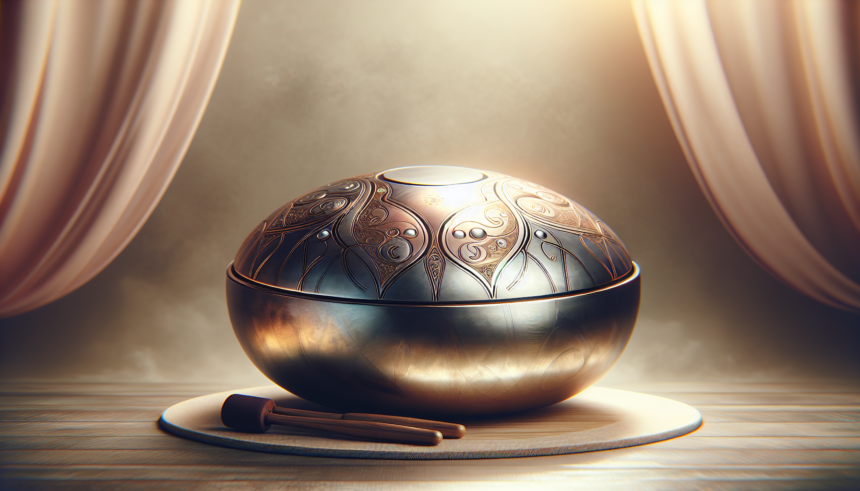In the diverse and intricate world of percussion instruments, the Meraki handpan stands out as an epitome of craftsmanship, musical innovation, and cultural evolution. With its roots steeped in tradition and its heart beating to the rhythm of innovation, Meraki handpans have carved a niche for themselves among musicians, enthusiasts, and collectors alike. This article delves into the unique aspects of Meraki handpans, exploring their history, construction, and the fantastic fusion of tradition and modernity that they represent.
History and Origins of the Handpan
To truly appreciate Meraki handpans, it’s essential to understand the origins of the handpan itself. The handpan, often referred to as a hang drum, is a relatively modern instrument that emerged in the early 21st century. It was initially developed by Felix Rohner and Sabina Schärer in Switzerland, who were inspired by various traditional percussion instruments, including the Caribbean steelpan and the Indian ghatam.
The handpan’s unique sound and playing technique quickly gained popularity among musicians and listeners. Its ethereal tones and harmonic richness made it a favorite for melodic percussion, and its meditative qualities found a home in both personal and therapeutic settings. Despite its relatively recent creation, the handpan has become a beloved instrument known for its capacity for emotional expression and musical versatility.
The Birth of Meraki Handpans
Meraki handpans originated from a vision to take the already mesmerizing qualities of the handpan and elevate them through both traditional craftsmanship and modern innovations. The term “Meraki” itself is a Greek word meaning to do something with soul, creativity, or love—an ethos that perfectly encapsulates the philosophy behind these unique instruments.
Founded by visionary musicians and artisans, Meraki Handpans set out to create instruments that not only sound transcendent but also physically embody the love and devotion poured into their creation. By marrying age-old techniques with contemporary advancements in acoustic design, Meraki handpans have managed to strike a beautiful balance between historical reverence and forward-thinking artistry.
Handcrafting Excellence: The Making of a Meraki Handpan
Crafting a Meraki handpan is an intricate process that demands precision, skill, and an intuitive understanding of acoustic principles. Each handpan starts as two sheets of high-quality steel, which are then painstakingly shaped into the characteristic convex forms. This forming process involves a combination of manual hammering and machine-based shaping to achieve the perfect curvature and structural integrity.
One of the standout features of Meraki handpans is the careful tuning of each note. Skilled tuners use a combination of mechanical devices and their own trained ears to ensure that each instrument produces a harmonious and balanced sound. This is not merely a technical task but an art form, requiring years of experience and a deep connection to the instrument.
Additionally, Meraki handpans often incorporate innovative materials and coatings to improve durability and sound projection. This could include specialized nitrided steel that resists rust and enhances tonal clarity, ensuring that the instrument maintains its exceptional quality over extended periods.
Soundscapes: The Sonic Signature of Meraki Handpans
The beauty of a Meraki handpan lies in its unique soundscapes, capable of transporting listeners to transcendental realms. Each handpan is typically crafted with a central note, known as the ding, surrounded by several other notes arranged in a circular pattern. This layout allows for seamless transitions and combinations, enabling musicians to explore an array of melodic possibilities.
The sound produced by a Meraki handpan is warm, resonant, and rich in harmonics. Its tones possess an almost ethereal quality, harmonizing well with other instruments and standing out in solo performances. The precision tuning ensures that each note resonates with clarity, enabling players to create deeply emotional and moving compositions.
Moreover, the versatility of these handpans allows them to be used in different musical genres, from world music and ambient to contemporary classical compositions. This wide range of applications underscores their adaptability and the universal appeal of their sound.
Tradition Meets Innovation
One of the defining characteristics of Meraki handpans is the perfect fusion of traditional craftsmanship with innovative techniques and materials. While the crafting process respects time-honored methods of manual shaping and tuning, it is also supplemented by modern advancements that enhance the instrument’s quality and performance.
For instance, the use of nitrided steel not only augments the handpan’s tonal properties but also increases its lifespan by preventing rust and corrosion. Similarly, computer-aided design (CAD) tools are sometimes employed to refine the acoustic architecture, ensuring that each handpan delivers optimal sound quality.
This blend of old and new results in instruments that are not only visually stunning but also acoustically superior. Each Meraki handpan symbolizes a beautiful amalgamation of history and innovation, making it a true representation of the evolution of musical instruments.
The Community and Cultural Impact
The influence of Meraki handpans extends beyond their musical capabilities; they have also fostered a vibrant and passionate community of musicians, listeners, and makers. This community values not just the musical potential of the handpan but also the shared cultural and artistic heritage that it represents.
Workshops, festivals, and gatherings centered around handpans provide platforms for artists from diverse backgrounds to come together, share their knowledge, and inspire one another. These events often highlight the communal and collaborative spirit inherent in handpan culture, promoting unity and creative expression.
Furthermore, the therapeutic and meditative qualities of Meraki handpans have found applications in wellness and mindfulness practices. Their soothing tones are used in sound therapy sessions, yoga classes, and meditative exercises, underscoring their significance beyond mere musical instruments.
Conclusion
Meraki handpans represent a spectacular fusion of tradition and innovation in the world of percussion. With a deep respect for the roots of the handpan and a commitment to pushing the boundaries of what these instruments can achieve, Meraki handpans stand as beacons of exceptional craftsmanship and artistic vision.
By seamlessly blending old-world techniques with modern advancements, Meraki handpans offer a unique sonic experience that resonates with musicians and listeners worldwide. Whether used in a formal concert, a casual jam session, or a meditative setting, these handpans continue to enchant and inspire, solidifying their place in the pantheon of extraordinary musical instruments.
FAQs
1. What materials are used to make Meraki handpans?
Meraki handpans are typically made from high-quality steel, often with specialized treatments like nitriding to enhance durability and tonal clarity. This ensures that the handpans not only sound great but also remain resistant to rust and corrosion over time.
2. How are Meraki handpans tuned?
Tuning a Meraki handpan involves a combination of mechanical tuning devices and the skilled ears of experienced artisans. Each note is carefully shaped and adjusted to produce a harmonious and balanced sound, making the tuning process both a technical and artistic endeavor.
3. Can novices play Meraki handpans?
Yes, Meraki handpans are designed to be player-friendly and can be enjoyed by beginners as well as seasoned musicians. The layout of the notes and the intuitive playing technique make it accessible for new players while offering enough depth for advanced performers to explore complex compositions.
4. Are Meraki handpans suitable for different musical genres?
Absolutely. Meraki handpans are versatile instruments that can be used across various musical genres, including world music, ambient, contemporary classical, and even fusion genres. Their rich and resonant tones make them compatible with a wide range of musical styles and settings.
5. Where can one purchase a Meraki handpan?
Meraki handpans can be purchased directly from the official Meraki Handpans website, authorized dealers, and select musical instrument stores. Due to their handcrafted nature and high demand, it’s advisable to check for availability and possibly join a waiting list to ensure you get one of these exceptional instruments.





